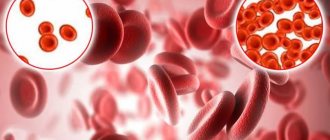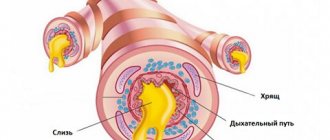Galactosemia is a rare hereditary disease caused by a metabolic disorder in which the carbohydrate metabolism of galactose occurs abnormally. Galactosemia should not be confused with lactose intolerance. These two diseases are in no way related to each other. Galactosemia is inherited genetically, in an autosomal recessive manner, and occurs due to insufficient activity of the enzyme responsible for the complete absorption of galactose by the body.
This disease was first described in 1917, and already in 1956 the main cause of the disease was identified - a disorder of galactose metabolism.
Galactosemia in newborns occurs in approximately 1 case out of 15-20 thousand. A very rare disease that can sometimes be found in Japan and much more often among Irish nomads (or Irish gypsies), due to inbreeding within a relatively small gene pool.
Reasons for the development of the disease
Galactosemia is inherited in an autosomal recessive manner. Despite the fact that galactose and glucose are similar in composition, the process of formation of the latter is necessary, since glucose is the main component for the growth and development of a child. The disease of carbohydrate metabolism has several genetic forms, but most often the mutation is observed in the GALT gene (9p13.3) of the possible 3 types of enzyme: galactose-1-phosphate-uridyltransferase (GALT), galactokinase (GALA), UDP-galactose-4-epimerase ( GALE, epimerase). The deficiency of one of the enzymes causes a violation of galactose metabolism.
Application area
Today, few people use galactose. This is because most people are not even aware of the existence of this sugar. In the food industry, this simple carbohydrate is used to create the gum food additive. Some athletes resort to this substance during training. But so far this sugar has not become widespread.
In medicine, galactose has found its use as a contrast agent for ultrasound diagnostics. Microbiologists use a simple saccharide as a means of determining the type of microorganism.
Mechanism of disease development
Galactose plays a particularly important role in the development of a growing organism. It is important not only for the growth of the child, but also in the formation of cells, nerve endings, and cell membranes. Violation of galactose metabolism leads to disruption of the proper functioning of many organs and systems. As a result of the deficiency of one of the enzymes involved in the breakdown of galactose, there is not only an increase in the concentration of the latter in the blood, but also an accumulation of pathological breakdown products of the affected enzyme. It is the final breakdown products (galactose-1-phosphate, galactitol) that lead to disruption of the functioning of body systems, as well as the formation of complications of the disease.
Sources
The main dietary source of galactose is lactose from milk and yogurt.
In addition, other dairy foods also contain small amounts of free galactose, regardless of the presence of lactose in them. Lactose-free milk, cheeses, sour cream, and ice cream can serve as a source of monosaccharide.
Dairy products containing monosaccharides: milk, kefir, whey, fermented baked milk, yogurt, sour cream, ice cream, cottage cheese, cheese, cream, butter, margarine.
Also found in fruits, vegetables (especially celery), nuts, grains, fresh meat, eggs. True, in this category of products the substance content usually does not exceed 0.3 g per serving. There are also carbohydrate reserves in peas and milk chocolate. Well, very small amounts of galactose are found in some medications.
Classification of galactosemia
The classification is based on the etiological principle, that is, forms are distinguished depending on the damaged enzyme.
- Galactosemia type I is the most common form, therefore it has another name - classical. This type is characterized by a deficiency of the enzyme galactose-1-phosphate uridyl transferase (GALT).
- Galactosemia type II. This form of the disease has a deficiency of the enzyme galactokinase (GAK).
- Galactosemia type III. This type of disease includes a deficiency of the enzyme UDP-galactose-4-epimerase (GALE, epimerase).
Clinical picture
The clinical manifestations of galactosemia also vary depending on the type of disease.
Symptoms of classic galactosemia
Classic galactosemia is the most severe form of the disease, which is caused by GALT deficiency. It appears in the first days of a child’s life and, in the absence of medical care, can lead to death. Despite the fact that the child receives mother's milk, he does not gain weight well, regurgitation, vomiting, diarrhea, weakness, lethargy, sleep disturbances and appetite are observed. As a result of impaired breakdown of galactose into glucose, the child experiences a hypoglycemic state (decreased blood glucose concentration). Signs of liver damage are increasing, which are manifested by jaundice and enlargement of the affected organ. The most severe manifestation of galactosemia is neonatal sepsis, which often results in death. This condition is caused by gram-positive bacteria, up to 90% of cases - E. coli.
The mortality rate from the classic form of galactosemia is 75% in the absence of medical care.
Death can occur from sepsis or chronic liver failure. Often, children can be diagnosed with cataracts immediately after birth, which develops as a result of the accumulation of galactitol in the lens of the eye. The severity of clinical manifestations depends on the degree of reduction of the enzyme, which has a negative effect on galactose metabolism. In this regard, without treatment, children can survive, but they develop chronic renal failure and severe neurological disorders, leading to the child’s disability and decreased quality of life.
In the blood of such patients one can observe: an increase in liver enzymes, bilirubin, a decrease in the concentration of glucose and albumin, an increase in ammonia and some amino acids (phenylalanine, tyrosine), and a violation of the acid-base state. An ultrasound examination of the liver reveals its enlargement. Sepsis can be judged by increased C-reactive protein and procalcitonin.
Galactosemia type II
It is observed with deficiency of the enzyme galactokinase (GALA). The first type is much less common. The clinical picture of this form is not as pronounced as that of classical galactosemia. Symptoms characteristic of the first type of disease may be subtle. The most informative is an increase in the concentration of galactose in the urine and blood. Subsequently, such children often develop cataracts.
Galactosemia type III
Characterized by a deficiency of the enzyme UDP-galactose-4-epimerase. This condition is extremely rare and can manifest itself in 2 forms: benign and malignant. The benign (isolated, peripheral) form is manifested by enzyme deficiency only in circulating blood cells. There are often no clinical symptoms, and the disease is detected incidentally during blood collection. However, children later experience delays in physical and neuropsychic development. Malignant or generalized - a severe course of the disease, since enzyme deficiency is observed in all tissues.
In addition to the symptoms described above, with galactosemia it is possible to identify a combination of symptoms:
- jaundice;
- hemorrhagic syndrome;
- cataracts in the first months of life;
- sepsis;
- increase in the size of the liver and spleen;
- retardation in physical and neuropsychic development.
Signs and symptoms
A baby with galactosemia appears normal at birth, but after a few days or weeks loses his appetite (anorexia) and begins to vomit excessively. Yellowing of the skin, mucous membranes, and whites of the eyes (jaundice), enlargement of the liver (hepatomegaly), amino acids and protein in the urine, impaired growth, and eventually fluid accumulation in the abdomen (ascites) with abdominal swelling may also occur. Diarrhea, irritability, lethargy and bacterial infection may also be early signs of galactosemia. Over time, tissue depletion, severe weakness, and extreme weight loss occur if lactose is not removed from the diet.
Children with galactosemia who are not treated in the early stages may exhibit delayed physical and mental development and are especially susceptible to cataracts in infancy or childhood. In severe cases, overwhelming infection in the newborn period can lead to life-threatening complications, but in mild cases, signs of the disease are minor and there are no serious problems.
To avoid the consequences of galactosemia, which may include liver and kidney failure, brain damage and/or cataracts, children should be treated promptly by removing lactose from the diet. Children treated with this special diet usually show satisfactory general health and growth. They can make reasonable, although often suboptimal, intellectual progress. Speech and learning problems and some behavioral problems may still occur. Ovarian failure is almost always observed in girls with classic galactosemia and is associated with increased blood levels of the gonadotropin hormone, follicle-stimulating hormone (FSH); Men with galactosemia usually do not experience abnormalities in the function of the gonads.
Diagnosis of the disease
According to the order of the Ministry of Health of the Russian Federation No. 185 of 2006, all newborns must be tested for 5 genetic diseases: cystic fibrosis, adrenogenital syndrome, hypothyroidism, phenylketonuria, galactosemia. Neonatal screening is carried out for full-term newborns on the 4th day, and for premature newborns on the 7th day. The material is collected from the baby’s heel and a drop of blood is applied to a special paper with a reagent. Afterwards, the dried blood is analyzed using the fluorescent method.
A serum total galactosemia level of less than 7.2 mg/dL is considered negative. The borderline numbers are 7.2 - 10 mg/dl; such an analysis requires a retake. The test for galactosemia is considered positive when the amount of galactose is more than 10 mg/dl. If galactose increases above 7.2 mg/dL, additional DNA diagnostics are performed in order to first exclude classic galactosemia.
Glucose formula. The structure of glucose as a polyhydric aldehyde alcohol
Structure of glucose
The name “carbohydrates” has been preserved since those times when the structure of these compounds was not yet known, but their composition was established, which corresponds to the formula Cn(H2O)m. Therefore, carbohydrates were classified as carbon hydrates, i.e. to compounds of carbon and water - “carbohydrates”. Nowadays, most carbohydrates are expressed by the formula CnH2nOn. 1. Carbohydrates have been used since ancient times - the very first carbohydrate (more precisely, a mixture of carbohydrates) that man became acquainted with was honey. 2. Sugarcane is native to northwestern India-Bengal. Europeans became familiar with cane sugar thanks to the campaigns of Alexander the Great in 327 BC. 3. Beet sugar in its pure form was discovered only in 1747 by the German chemist A. Marggraf. 4. Starch was known to the ancient Greeks. 5. Cellulose, as a component of wood, has been used since ancient times. 6. The term “sweet” and the ending - osa - for sugary substances was proposed by the French chemist J. Dula in 1838. Historically, sweetness was the main feature by which a particular substance was classified as a carbohydrate. 7. In 1811, the Russian chemist Kirchhoff was the first to obtain glucose by hydrolysis of starch, and the Swedish chemist J. Berzemus proposed the correct empirical formula for glucose for the first time in 1837: C6H12O68. The synthesis of carbohydrates from formaldehyde in the presence of Ca(OH)2 was carried out by A.M. Butlerov in 1861. Glucose is a bifunctional compound, because contains functional groups - one aldehyde and 5 hydroxyl. Thus, glucose is a polyhydric aldehyde alcohol.
Treatment of galactosemia
Diet therapy is the main principle of treatment of galactosemia. Products containing galactose and lactose are excluded from the diet. Products contraindicated: all dairy products, as well as products that may contain milk. Low lactose products should also be excluded. Children of the first year of life are prescribed mixtures based on soy protein isolate (Nutrilak Soya, Nutrilon Soya, Humana SL, Frisosoy). For allergies to soy protein, mixtures based on casein hydrolyzate (Frisopep AS, Progestemil) are used. The therapeutic mixture is introduced gradually over 7 days, starting with 1/5 - 1/10 of the required amount, slowly replacing mother's milk.
Complementary foods can be introduced from 4.5 months. The primary ones can be either vegetables without the addition of milk and legumes, or dairy-free porridge (rice, buckwheat, corn). It is important to give preference to industrially produced products. From 6 months you can introduce meat purees. And then juices. You must always pay attention to the composition of the product.
If the content is more than 20 mg of galactose, the product is not used!
It is also necessary to pay attention to the composition of medications, which are often prepared on the basis of lactose. Galactose in the blood is monitored once every 3 months. Manifestations of the disease, such as sepsis, jaundice, dysfunction of the kidneys, liver, central nervous system, are treated according to generally accepted principles. But it is worth noting that after correcting the child’s diet, all clinical symptoms quickly stop.
What is galactose
Galactose is a monosaccharide of the hexose class, which is found in the disaccharide lactose and other polysaccharides. Not an essential nutrient. This white crystalline powder is slightly soluble in ethanol and in water at 25 degrees Celsius. The melting point is about 165-170 degrees, caramelization of the substance begins at 160 Celsius.
Content:
- What is galactose
- Biochemical characteristics
- Monosaccharide metabolism
- Functions in the human body
- Advantages
- Galactosemia
- Treatment of galactosemia
- Sources
- Application area
- Warning
- Daily norm
- Symptoms of deficiency and excess
- Interesting Facts
Found in milk, sugar beets, gum and some energy drinks. It is a monosaccharide found in complex carbohydrates found in various fruits and vegetables, such as tomatoes, potatoes, celery, beets, kiwi, and cherries. In addition, the human body is capable of independently synthesizing this substance, which is a component of glycolipids and glycoproteins. Found in brain cells and nerve tissues.
It is one of three monosaccharides found in nature (the other two being glucose and fructose). Serves as a building block for another equally important carbohydrate - lactose, which a person gets from milk. This monosaccharide is essential for milk production in nursing mothers. But galactose is used extremely rarely as a sweetener, although this substance belongs to sugars. It contains two-thirds less sweetness than regular sugar. Meanwhile, given that galactose, like fructose, has a low glycemic index, it makes sense to talk about it as a safe sugar, in particular for people with diabetes. This substance is also used as a light sweetener in sports and other diet drinks.
Disease prognosis
The prognosis of galactosemia in severe forms and late diagnosis is unfavorable. The risk of death is very high. With the right diet, children can develop normally. But, unfortunately, sometimes even with timely treatment, children often develop delayed complications (delayed physical, motor, neuropsychic, speech development). Patients with galactosemia should be regularly examined by a pediatrician to evaluate the following indicators:
- indicators of physical development;
- nervous system assessment;
- state of vision and hearing;
- assessment of the skeletal and muscular system;
- indicators of sexual development, especially in girls, since one of the delayed complications in females is ovarian failure.
Changes in some indicators:
- height. Often sick children experience growth retardation in adolescence, but after puberty they catch up with their peers;
- psychospeech development and motor skills. In young children receiving nutritional therapy, mental development delays are minimal or absent. But when entering school, a child may have difficulty mastering new information. Some patients after 5 years have movement disorders: impaired coordination and balance, fine motor skills, possible appearance of tremor (small-swinging movements);
- eye diseases. In 30% of patients with galactosemia, cataracts are registered in early infancy. It is transistor in nature and goes away under the influence of treatment. An ophthalmologist detects cataracts using a slit lamp;
- condition of the skeletal system. In children, bone tissue mineralization is impaired, which leads to early osteoporosis;
- genital area in girls. Girls suffering from galactosemia should be closely monitored beginning at puberty, as they are at increased risk of developing ovarian dysfunction and amenorrhea. From the age of 15, constant consultations with a gynecologist and endocrinologist are required for hormone replacement therapy. It is also necessary to undergo an ultrasound examination of the pelvic organs once a year.
What complications can there be?
Without treatment, serious consequences of galactosemia are possible:
- Sepsis. This type of complication is observed in infants. Very dangerous and fatal.
- Oligophrenia.
- Ovarian wasting syndrome.
- Cirrhosis of the liver.
- Primary amenorrhea.
- Motor alalia.
- Hemorrhage into the vitreous body of the eye.
These complications can be avoided if, if you suspect a disease, you immediately contact a specialist and receive the correct treatment. Remember, the health of your baby’s body is in your own hands.
Prevention of galactosemia
Even during the planning period, you can assess the risk of having a child with galactosemia. A mother who has sick children has a 25% increased risk of having a child with the same disease.
Prenatal diagnosis (during pregnancy) allows you to determine the disease by DNA analysis. A chorionic villus biopsy is performed at 10–12 weeks, and amniocentesis is possible at 15–18 weeks. These procedures are highly invasive and therefore require a consultation before the procedure and the consent of the mother.
Postnatal prevention (after the birth of a child) is aimed at preventing the development of delayed complications of the disease; it includes diet therapy.
Description
The content of the article
Galactosemia refers to a number of congenital hereditary pathologies. This disease is quite rare in medical practice.
The development of pathology is associated with insufficient activity of enzymes necessary for the normal metabolic process that “process” galactose.
The clinical picture of galactosemia was first described in 1908 (although some date this fact only to 1917). Unfortunately, the experimental child was the one who suffered from exhaustion and an enlarged spleen and liver. It is stated that all these symptoms disappeared after the baby was taken off milk.
A more detailed description was made by Hermann Kelker; in 1956, it was he who pointed out the disturbance of galactose metabolism in newborns. After all, the first symptoms appear in the first three days after the birth of the baby.










